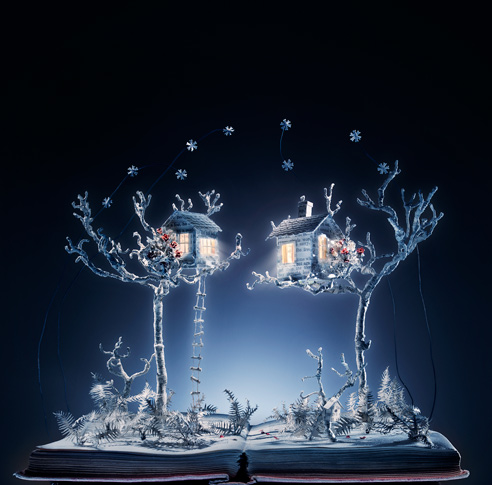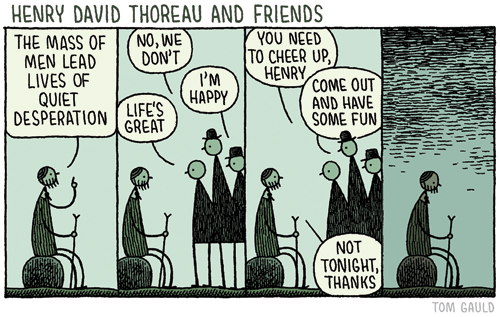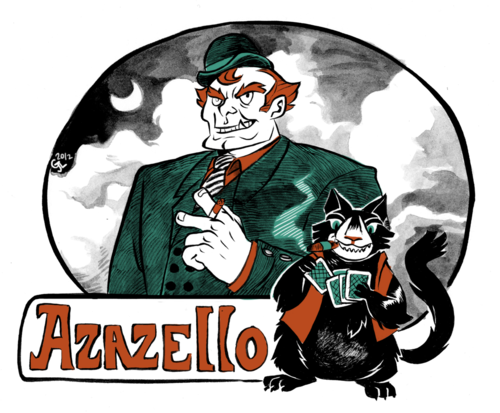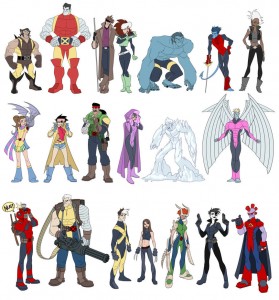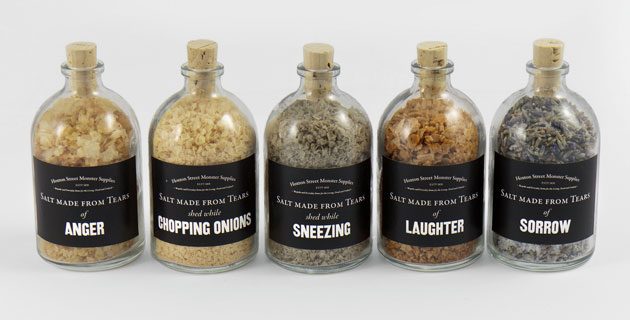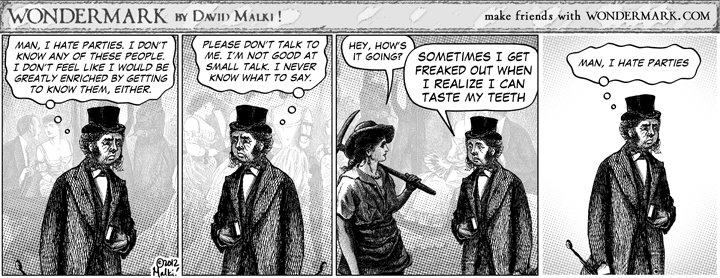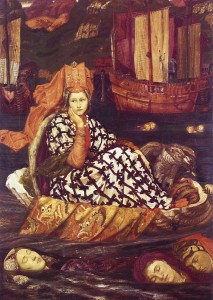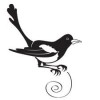 Here are some shiny things that caught my eye recently:
Here are some shiny things that caught my eye recently:
♦ I really love paper artist Su Blackwell‘s work, and the reason why is illustrated in “The Snow Queen” (photographed by Johanna Parkin):
On her website, Blackwell describes her work thus:
I often work within the realm of fairy-tales and folk-lore. I began making a series of book-sculpture, cutting-out images from old books to create three-dimensional dioramas, and displaying them inside wooden boxes.
For the cut-out illustrations, I tend to lean towards young-girl characters, placing them in haunting, fragile settings, expressing the vulnerability of childhood, while also conveying a sense of childhood anxiety and wonder. There is a quiet melancholy in the work, depicted in the material used, and choice of subtle colour.
♦ I love, love, love this cartoon from Tom Gauld (check out his website or tumblr for more—his cartoons tend toward the literary and are [sometimes heartbreakingly] hilarious):
Via.
♦ Book Nook.
Check out the ever-fantastic Jennifer Egan’s short story “Black Box,” which she wrote entirely in tweets. Via and Sterling on Facebook.
Did you know that May is National Short Story Month? Neither did I. But David Abrams at BookRiot has compiled a list of twenty short-story collections in honor of the month (my first creative writing professor, George Singleton, made the list). His introduction to the list is also worth reading, when he talks about why people might not like short stories based on school experiences (I also believe the way poetry is often taught in high school is the reason most people don’t like it):
It makes me wonder if we’re ruining future short-story enthusiasts at the age when they’re less capable of finding the subtleties and nuances of stories than they are in easier-to-grasp novels.By their nature, short stories compress language to its densest gem-like state (second only to poetry); novels sprawl and emphasize plot and are generally more accessible to younger readers.
Books save lives, people. Books save lives.
Check out AlphaBooks, an alphabetical tumblr exploration of fictional characters curated by Ben Towle (via). Right now the A’s have it, and how could I resist “A is for Azazello” by Caitlin Lehman? Indeed, I couldn’t:
Flavorwire had two fun articles: 10 of the Weirdest Children’s Book Authors of All Times (I didn’t think they were all that weird) and 10 YA Books that Scarred Us for Life (I’ve read all of these but the Pinkwater; I don’t feel particularly scarred by them).
This is a good reason not to loan books to anyone, if you want the book returned in decent shape (however you define “decent shape”). I’m more inclined now to buy people a copy of the book they’d like to borrow from me.
Ryan Britt offers an intriguing argument about why genre is synonymous with pop. Not completely unrelated: Lev Grossman maintains that genre fiction is disruptive technology.
♦ How great are these all-occasion regrets cards Evelyn Waugh would send out? Perhaps all misanthropic curmudgeons should have such a card. Via.
♦ Fascinating brief history of four-letter words!
♦ Comic book fans:
Matthew Humphreys designed some pretty cool X-Men (via):
Also, Shoshana Kessock looks at the evolution of comic-book movie heroines.
Learn which 10 epic villains were supposed to be one-offs (not all comic book villains, mind).
♦ Oh, how I want these Salts Made from Tears, sold by Hoxton Street Monster Supplies (via and via):
♦ Doug is bad at small talk (and so am I):
♦ I love Jonathan Coulton‘s song “Re: Your Brains”—here’s a fun interview with Coulton by John Scalzi about that zombie-licious song.
♦ Writers’ Corner.
Thanks to my friend Eljay Daly, I read Richard Parks’ “Just What the (Bleep) Do I Think I’m Doing?—Redux,” which describes the difference between plotters and pantsers (or, to use Parks’ terminology, Order and Chaos). Being more or less a plotter by nature, I found the insight into pantsers illuminating.
If you have a tendency to romanticize the writer’s life, you may find David R. Slavitt’s “Farewell to Novels” a suitable antidote. Via.
Further antidote: Chuck Wendig offers 25 reasons you should quit writing. His last reason gets to the heart of it:
If you’re willing to listen to me, and my words have given you pause, then you really should quit writing. And there’s no shame in that. Most folks who want to do this thing honestly never will—and maybe it’s best to maximize your opportunity and find your bliss somewhere else. But, if you’re reading all this and all you feel is the repeated urge to come find my house and flat-punch me in the trachea, good for you.
I’ve posted this piece by Ira Glass before—
—but I was reminded of it recently in a post by Terri Windling, who quoted Glass and then followed with these thoughts:
These are very true words, and I certainly wish someone had said them to me. I would have agonised less about the huge distance between the complex visions in my imagination and what I was able to put on the page in drawings and text. That distance never completely goes away…but it does get steadily smaller with time, hard work, and experience. In a youth-obsessed culture that over-emphasises early genius and the glamor of overnight success, it’s good to remind young people beginning their artistic lives that you don’t have to show up at the table as the artist you’re going to be, you grow and work yourself into that artist. You unfold into that artist over years and decades.
Her comments in turn reminded me of Malcolm Gladwell’s article “Late Bloomers,” which I’ve also posted about before.
Greg Rucka explains why he writes “strong female characters.”
For you teacher-writers, Jeff O’Neal offers 9 things he’s learned about writing by teaching freshmen to write. That list sounds about right to me.
Susan J. Morris at Omnivoracious analyzes what Word Clouds can tell you about your writing.
♦ Snow White and the Seven Movies is pretty cute. Directed by Alberto Belli and written by Genevieve Farrell (who also plays the titular role). Via.

